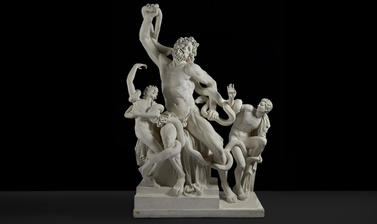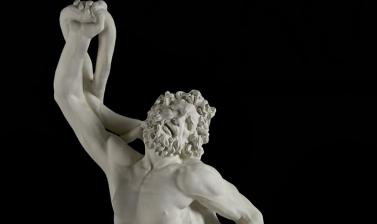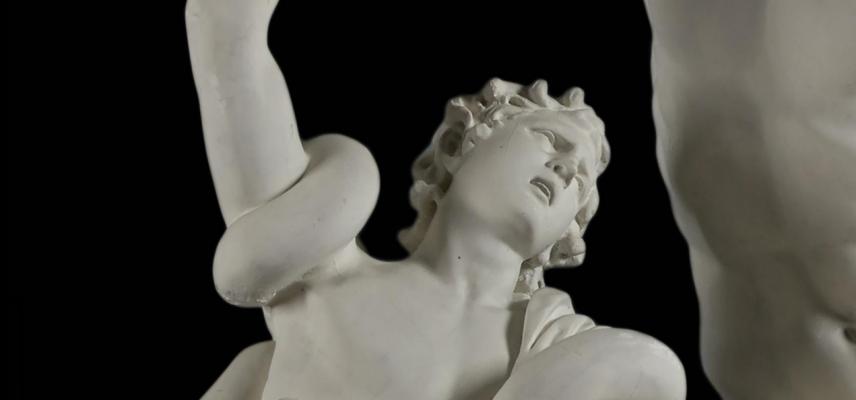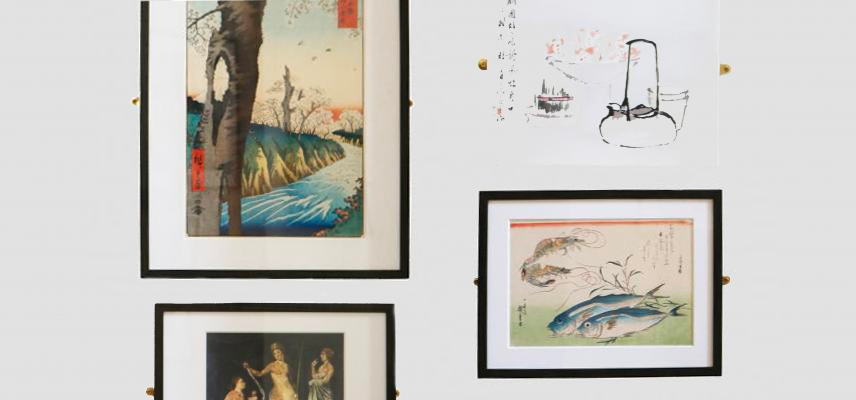LAOCOÖN GROUP
Punished by the Greek gods
Perhaps the single best known sculpture from antiquity, the so-called Laocoön group, was found in Rome in 1506 and placed on public display in the Vatican, where it remains. This cast was made from the marble original and acquired by the Ashmolean from the British Museum in 1933.
The Roman writer Pliny (active in the AD 70s) ascribed the group to the sculptors Hagesandros, Athenodoros and Ploydoros, who worked in the later first century BC. Although it is debated to what extent it can be regarded as a Hellenistic or Roman sculpture, the Vatican Laocoön is probably a version of a bronze original.
Laocoön, a Trojan priest of Apollo, and his sons struggle with two flesh-eating snakes, sent as a divine punishment. The priest had warned the Trojans against accepting the wooden horse sent by the Greeks and incurred the anger of Poseidon (some say Athena) who was supporting the Greeks. The saying ‘beware of Greeks bearing gifts’ comes from lines spoken by the priest in Virgil’s poem The Aeneid.
While struggling against the snakes, Laocoön supports himself against the altar on which he had been making a sacrifice. His head is turned back with a grimace of pain which is combined with the horror at the death of his sons, the exertion of his struggle and the awareness of his own imminent death.
The Laocoön group is one of the most discussed and famous pieces of Hellenistic sculpture, described by Michaelangelo as a ‘miracle of art’.
Original sculpture, Esquiline Hill, Rome
c. 50–20 BC
Cast from marble original
Height 238 cm
Acquired from the British Museum, 1933
View on our online Collection Online Site: CG.B 130
License this image - visit the Ashmolean Image Library















